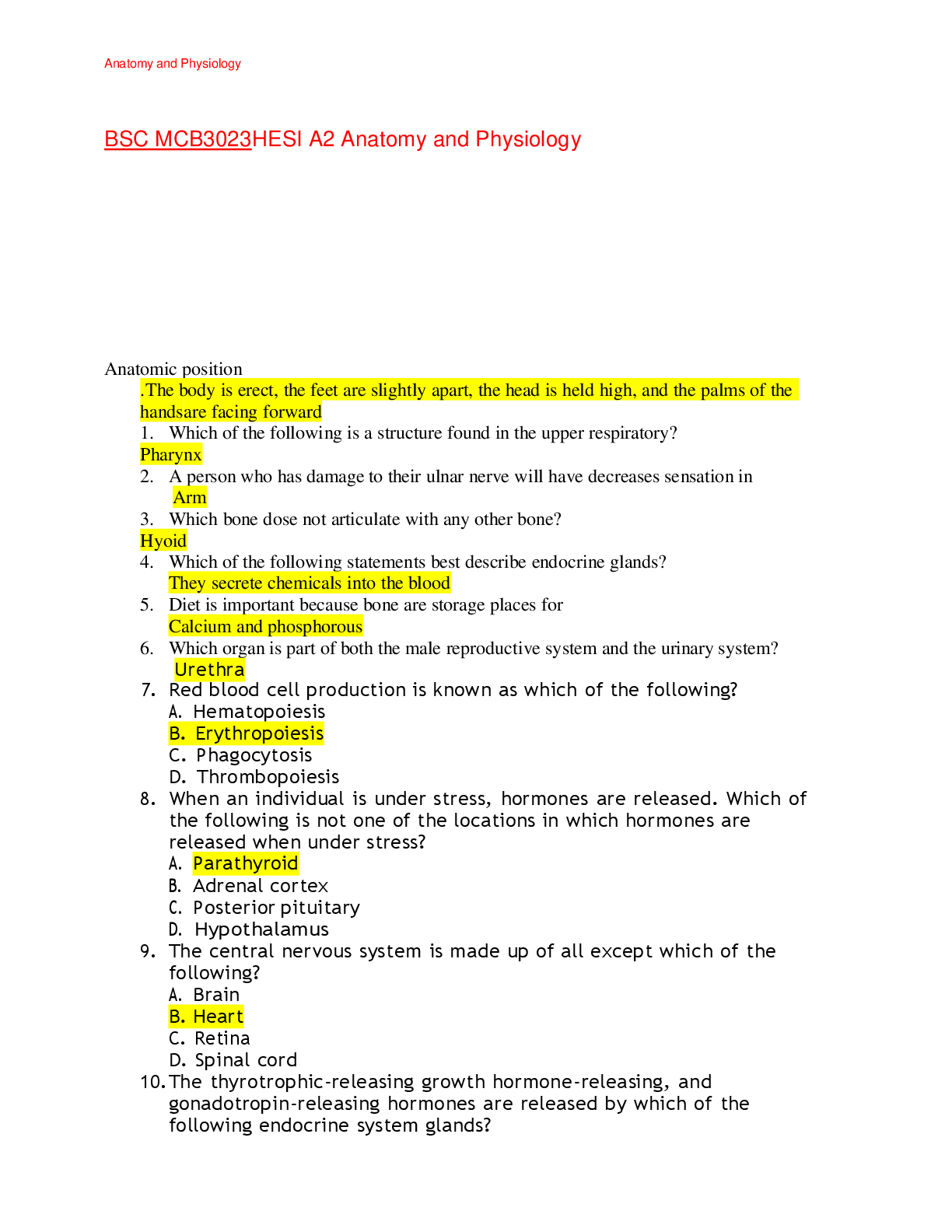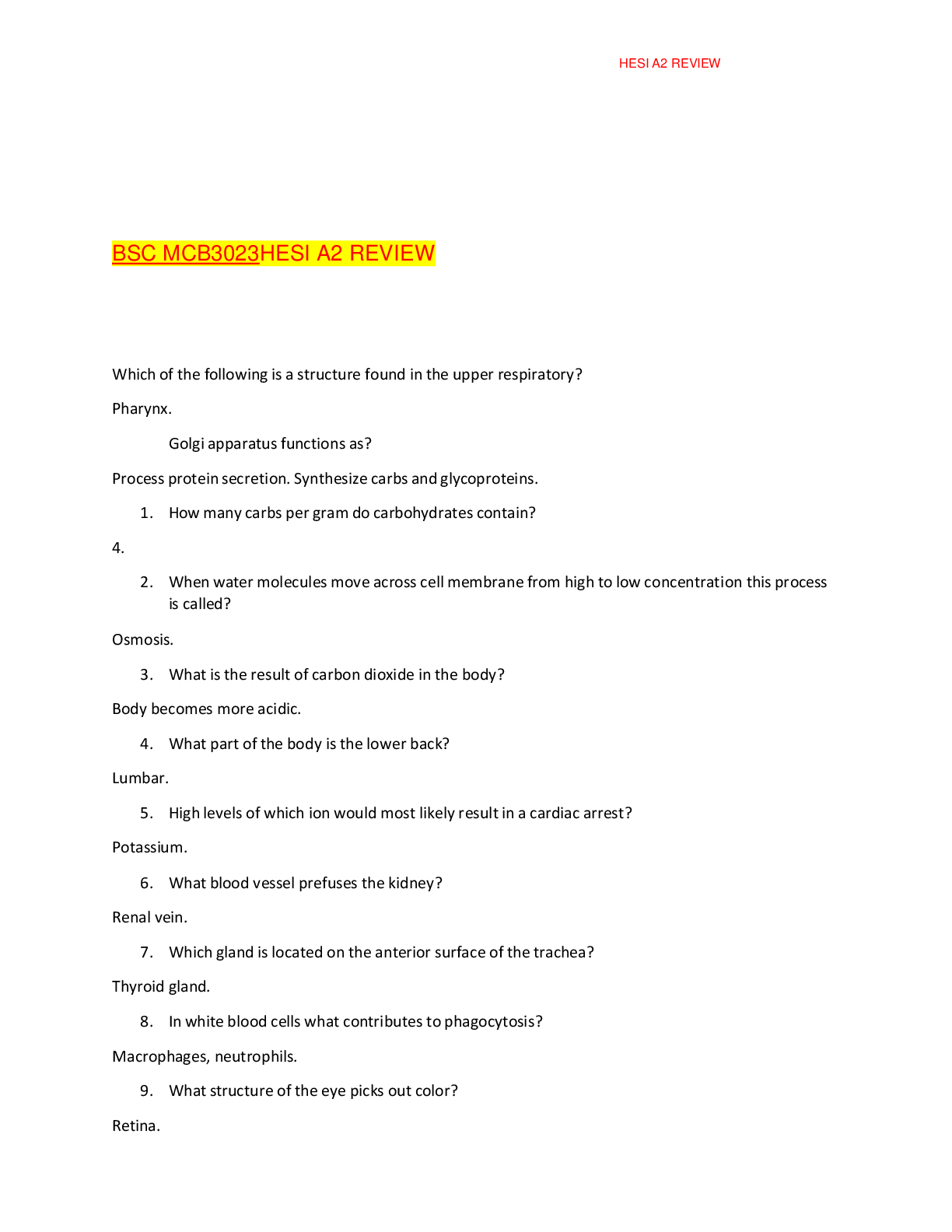*NURSING > HESI > N120 HESI Fundamentals Practice Test questions and 100% accuarate rationale answers. Rated A+ (All)
N120 HESI Fundamentals Practice Test questions and 100% accuarate rationale answers. Rated A+
Document Content and Description Below
N120 HESI Fundamentals Practice Test questions and 100% accuarate rationale answers. Rated A+ An elderly client with a fractured left hip is on strict bedrest. Which nursing measure is essential t ... o the client's nursing care? A. Massage any reddened areas for at least five minutes. B. Encourage active range of motion exercises on extremities. C. Position the client laterally, prone, and dorsally in sequence. D. Gently lift the client when moving into a desired position. - D. Gently lift the client when moving into a desired position. To avoid shearing forces when repositioning, the client should be lifted gently across a surface (D). Reddened areas should not be massaged (A) since this may increase the damage to already traumatized skin. To control pain and muscle spasms, active range of motion (B) may be limited on the affected leg. The position described in (C) is contraindicated for a client with a fractured left hip. The nurse is administering medications through a nasogastric tube (NGT) which is connected to suction. After ensuring correct tube placement, what action should the nurse take next? A. Clamp the tube for 20 minutes. B. Flush the tube with water. C. Administer the medications as prescribed. D. Crush the tablets and dissolve in sterile water. - B. Flush the tube with water. The NGT should be flushed before, after and in between each medication administered (B). Once all medications are administered, the NGT should be clamped for 20 minutes (A). (C and D) may be implemented only after the tubing has been flushed. A client who is in hospice care complains of increasing amounts of pain. The healthcare provider prescribes an analgesic every four hours as needed. Which action should the nurse implement? A. Give an around-the-clock schedule for administration of analgesics. B. Administer analgesic medication as needed when the pain is severe. C. Provide medication to keep the client sedated and unaware of stimuli. D. Offer a medication-free period so that the client can do daily activities. - A. Give an around-the-clock schedule for administration of analgesics. The most effective management of pain is achieved using an around-the-clock schedule that provides analgesic medications on a regular basis (A) and in a timely manner. Analgesics are less effective if pain persists until it is severe, so an analgesic medication should be administered before the client's pain peaks (B). Providing comfort is a priority for the client who is dying, but sedation that impairs the client's ability to interact and experience the time before life ends should be minimized (C). Offering a medication-free period allows the serum drug level to fall, which is not an effective method to manage chronic pain (D). When assessing a client with wrist restraints, the nurse observes that the fingers on the right hand are blue. What action should the nurse implement first? A. Loosen the right wrist restraint. B. Apply a pulse oximeter to the right hand. C. Compare hand color bilaterally. D. Palpate the right radial pulse. - A. Loosen the right wrist restraint. The priority nursing action is to restore circulation by loosening the restraint (A), because blue fingers (cyanosis) indicates decreased circulation. (C and D) are also important nursing interventions, but do not have the priority of (A). Pulse oximetry (B) measures the saturation of hemoglobin with oxygen and is not indicated in situations where the cyanosis is related to mechanical compression (the restraints). The nurse is assessing the nutritional status of several clients. Which client has the greatest nutritional need for additional intake of protein? A. A college-age track runner with a sprained ankle. B. A lactating woman nursing her 3-day-old infant. C. A school-aged child with Type 2 diabetes. D. An elderly man being treated for a peptic ulcer. - B. A lactating woman nursing her 3-day-old infant. A lactating woman (B) has the greatest need for additional protein intake. (A, C, and D) are all conditions that require protein, but do not have the increased metabolic protein demands of lactation. [Show More]
Last updated: 3 years ago
Preview 1 out of 29 pages
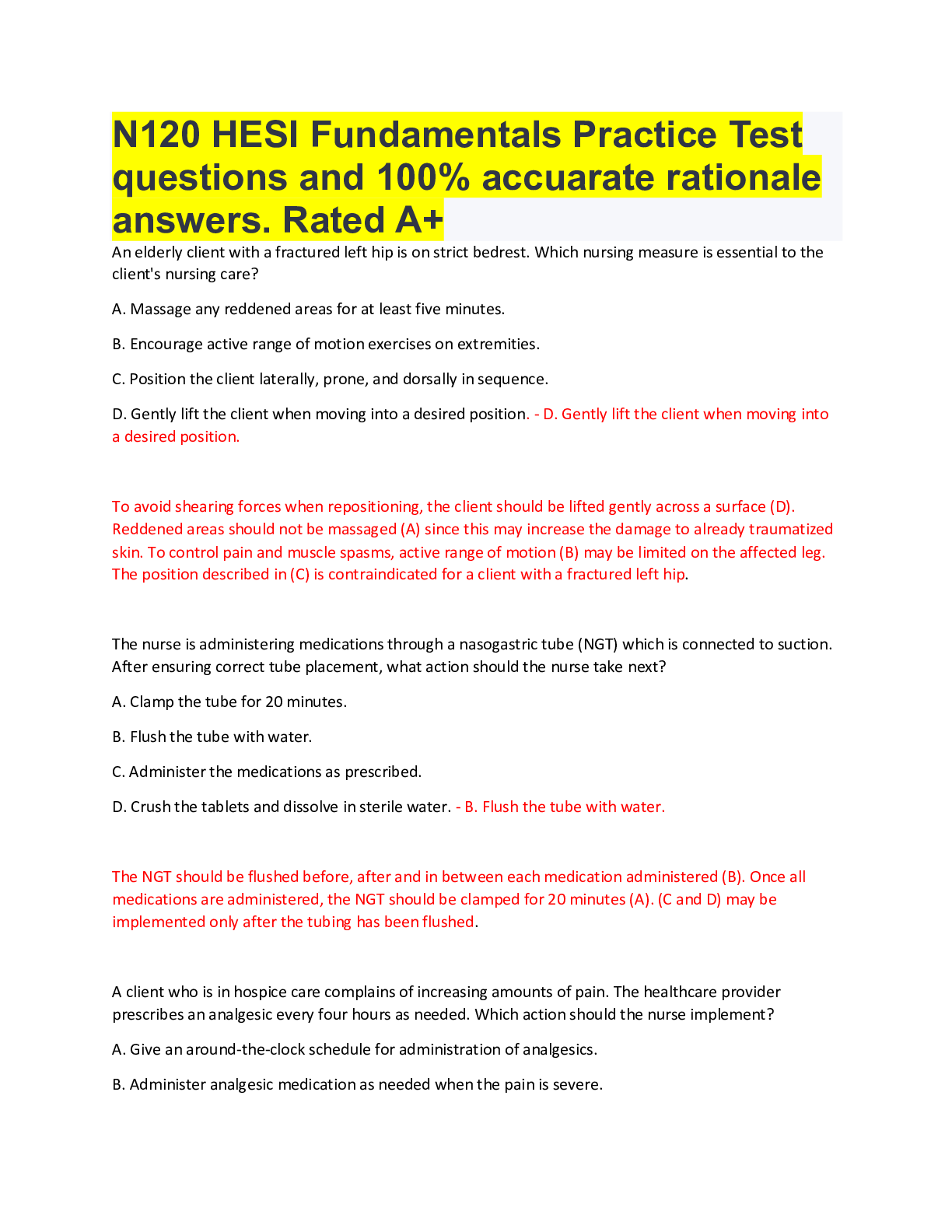
Buy this document to get the full access instantly
Instant Download Access after purchase
Buy NowInstant download
We Accept:

Reviews( 0 )
$7.00
Can't find what you want? Try our AI powered Search
Document information
Connected school, study & course
About the document
Uploaded On
Aug 21, 2022
Number of pages
29
Written in
All
Additional information
This document has been written for:
Uploaded
Aug 21, 2022
Downloads
0
Views
217

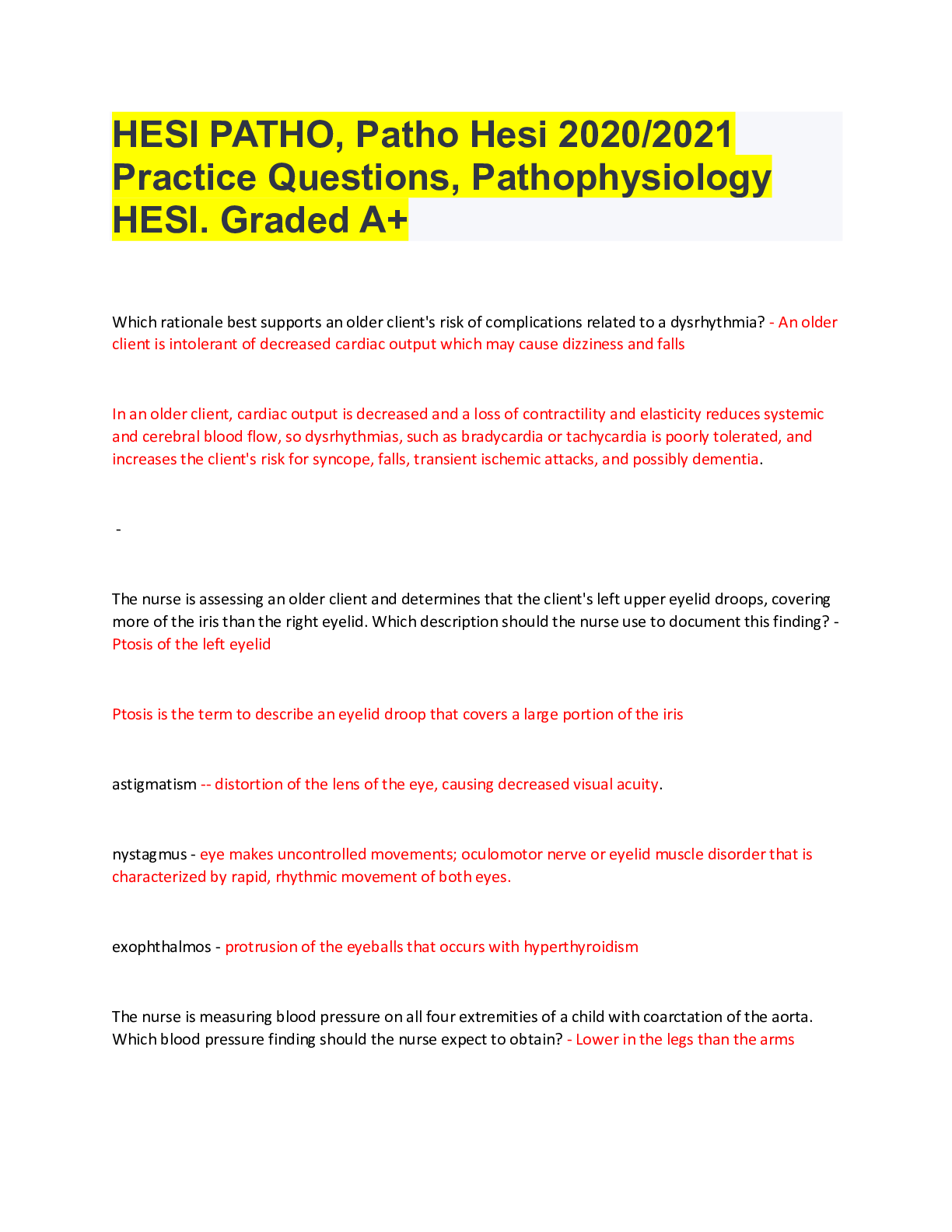



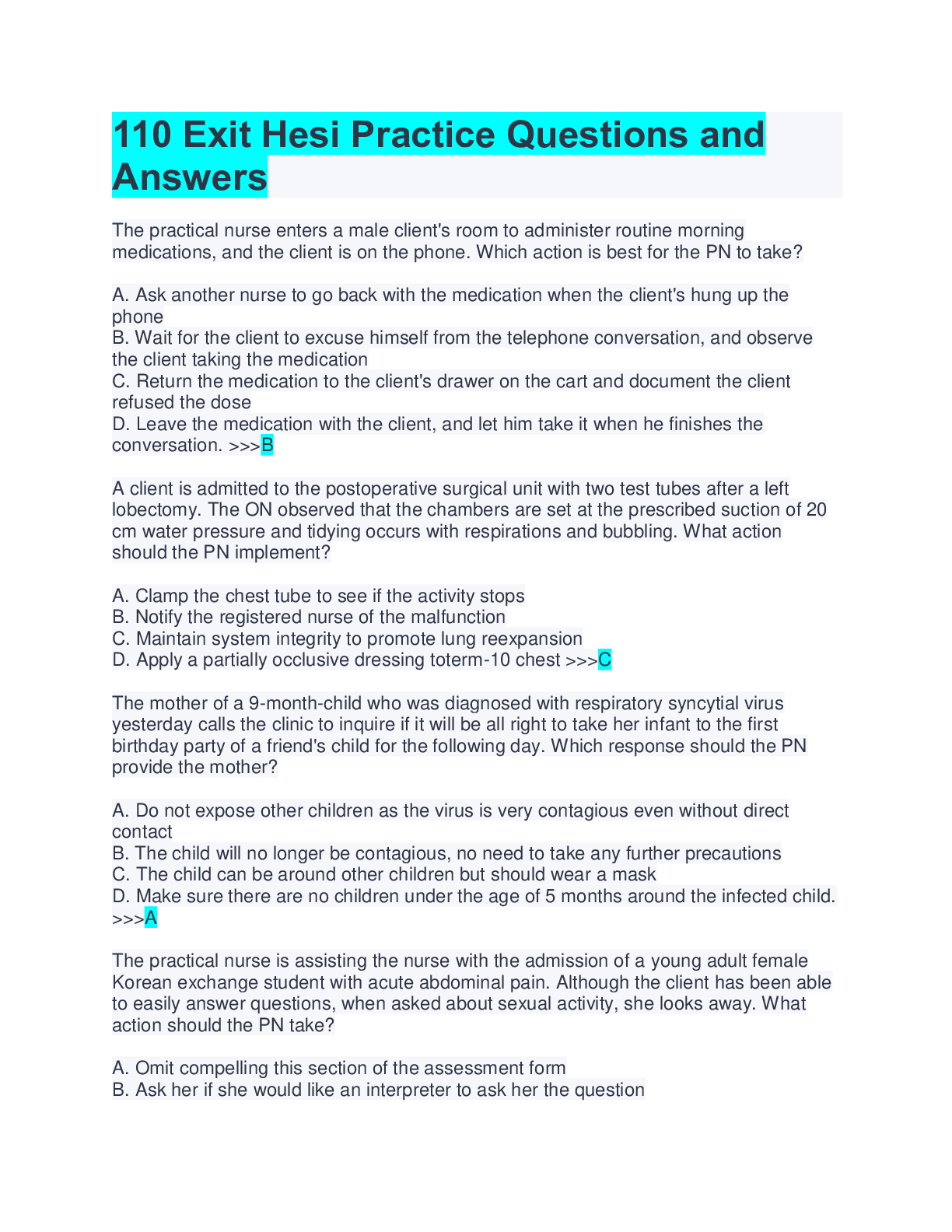

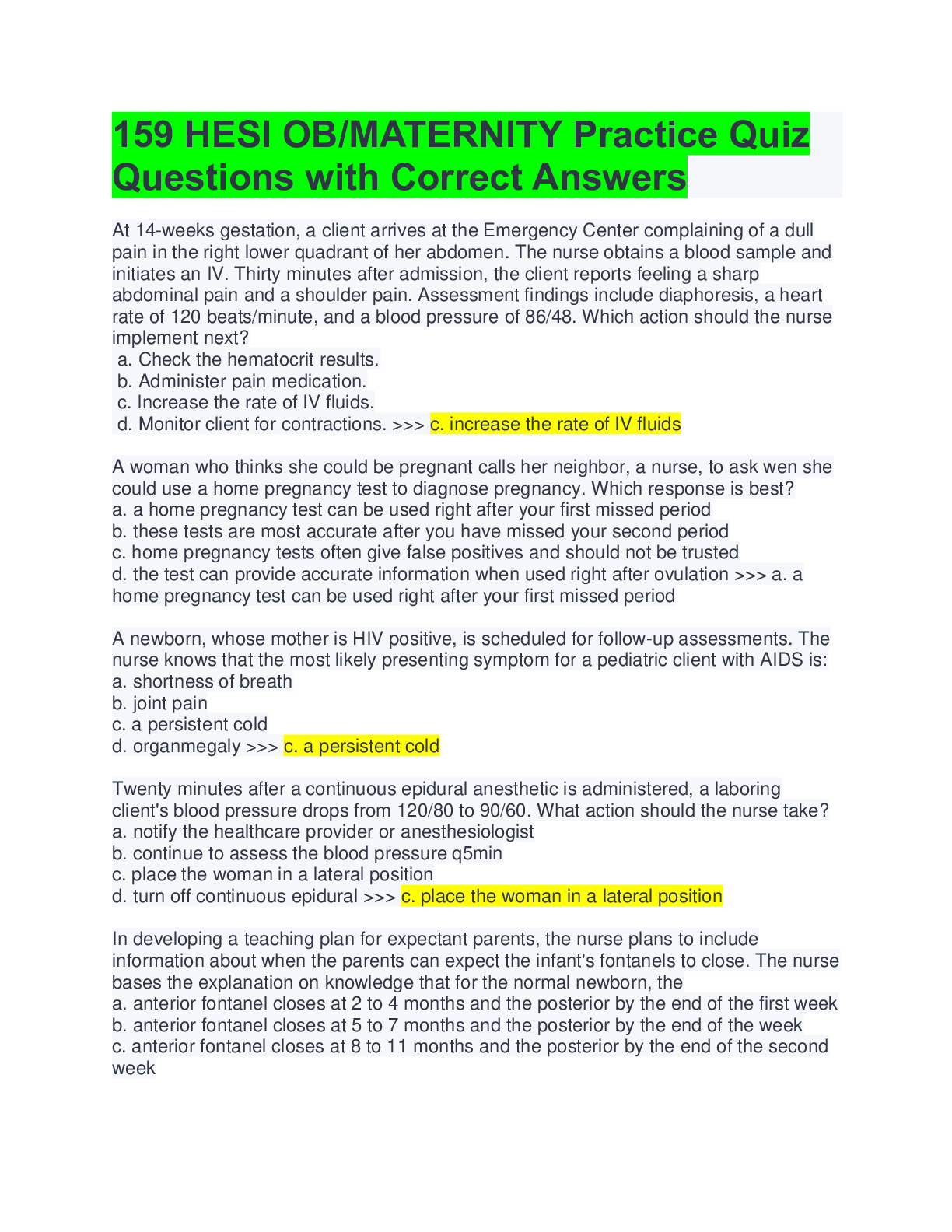
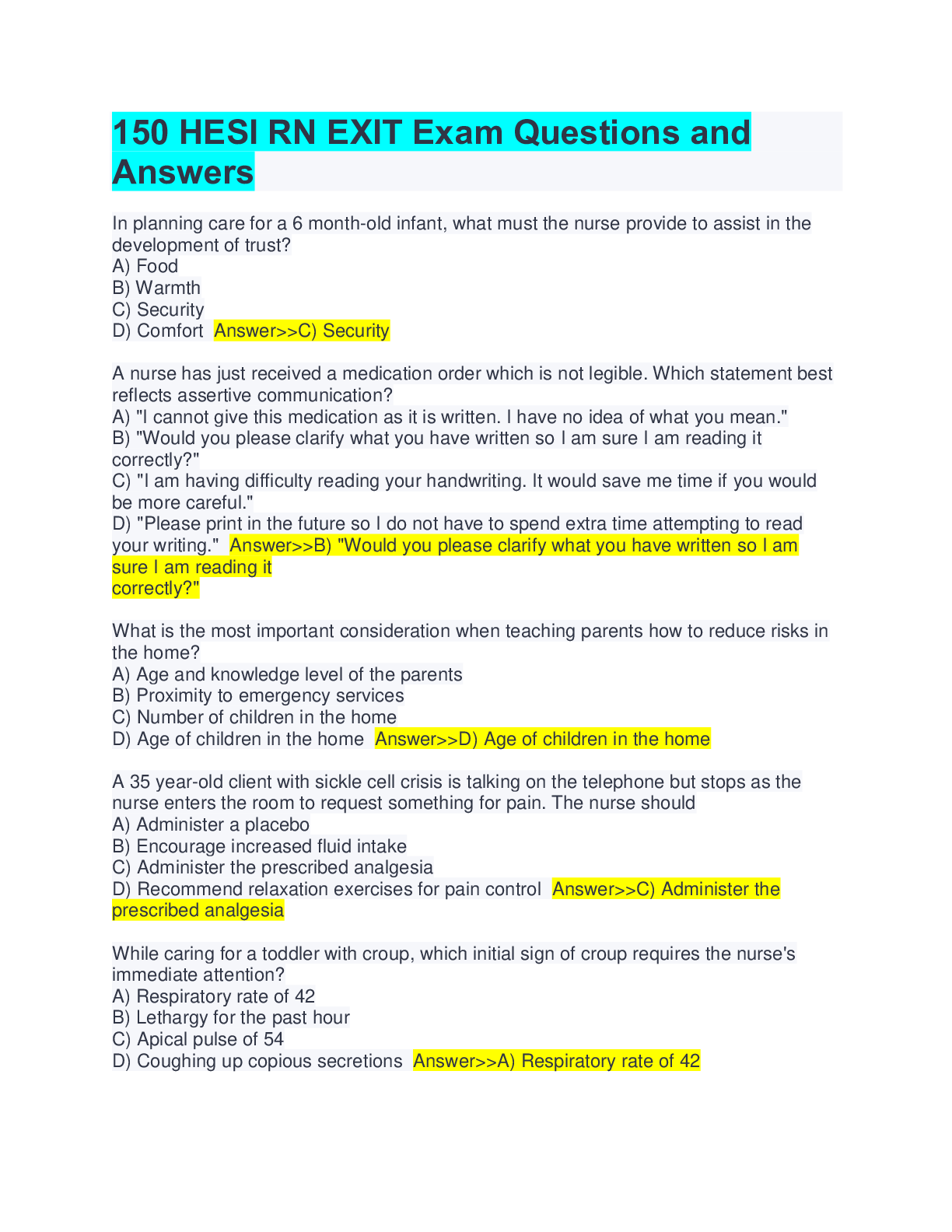


.png)









